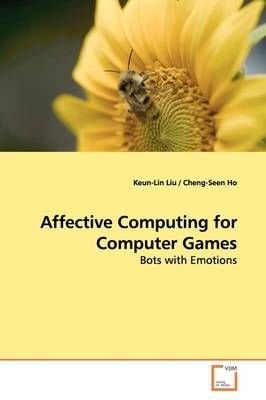Just like traditional AI applications, game AI mainlyfocuses on rational inference. But in the real world, humandecision making is not only involving rationality, but also sense. Inthis book, we propose an architecture for the bot designers toinclude affective computing in a game bot by attributing emotions tothe bot. The architecture is based upon a variety of theories,including the famous OCC model. It treats Joy, Fear, Anger,Disgust, and Distress as five basic emotions. It uses three emotionalvariables, namely, Desirability of an event, Blameworthiness orPraiseworthiness of an action, and Appealingness of an object, to evaluatehow a specific emotion is affected by the environment. In additionto an ordinary Rational Action Engine, which controls the rationalbehavior of a bot, we add an Emotional Action Engine in thearchitecture to make the emotional behavior possible. An Action Arbitratoris equipped to decide, given a specific time and space, whether abot should follow the rational or emotional inference. The arbitratorsimulates how humans solve the conflicts between reason and emotion.



![Elvis Presley - Karaoke - King Vol.1 [CD]](https://avmedia.ams3.cdn.digitaloceanspaces.com/e/d8/ed8bf834-4a12-4a04-9d62-98118a6a8b35.webp)
![Still Breathing [DVD]](https://avmedia.ams3.cdn.digitaloceanspaces.com/e/d8/ed8dda17-3cf9-48c4-a11c-915e18c21302.webp)
![Noble Beast [VINYL]](https://avmedia.ams3.cdn.digitaloceanspaces.com/8/cc/8ccdce3a-b8d4-4830-a068-0a7134985fef.webp)
![Kurt Vile - Smoke Ring for My Halo [CD]](https://avmedia.ams3.cdn.digitaloceanspaces.com/8/1d/81d9e46f-a978-43d2-886b-e7d36906383f.webp)





